This turkey roulade is made from turkey breast and stuffed with roasted butternut squash, cremini mushrooms, and dried cranberries, then wrapped in Parma ham. It’s so flavorful and perfect for an autumn Sunday dinner or for a special occasion like Thanksgiving or Christmas.
The stuffing is made from roasted butternut squash seasoned with rosemary, cremini mushrooms sauteed with onion and garlic, and dried cranberries. Wrapping the turkey roll in Parma ham protects the delicate meat from drying out and adds a lot of additional flavor. The butternut squash is deliciously sweet, mushrooms and rosemary add a savory note, and sweet and sour cranberries are balancing all the flavors. I served the roulade with simple gravy and mashed potatoes. The meat comes out so tender and juicy. A turkey roll is easier and quicker to prepare than a whole turkey!
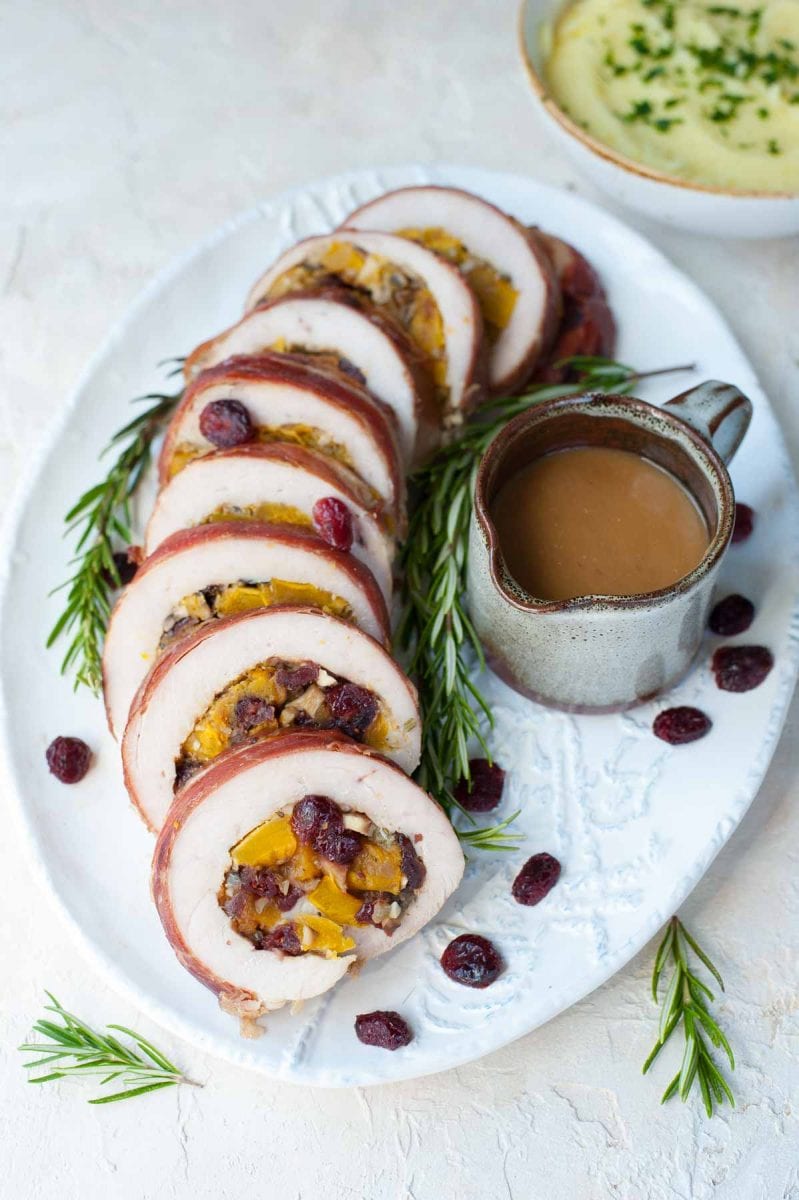
Why this recipe works
- The stuffing uses easy to get ingredients.
- The stuffing ingredients work perfectly together and are well seasoned.
- Wrapping the roulade in Parma ham prevents the meat from drying out and adds additional flavor.
- Letting the roulade stay in the fridge overnight results in juicy and flavorful meat and makes the roulade keep its shape better. Be generous with the salt, you can think of it as dry brining the turkey.
Recipe ingredients and substitutions
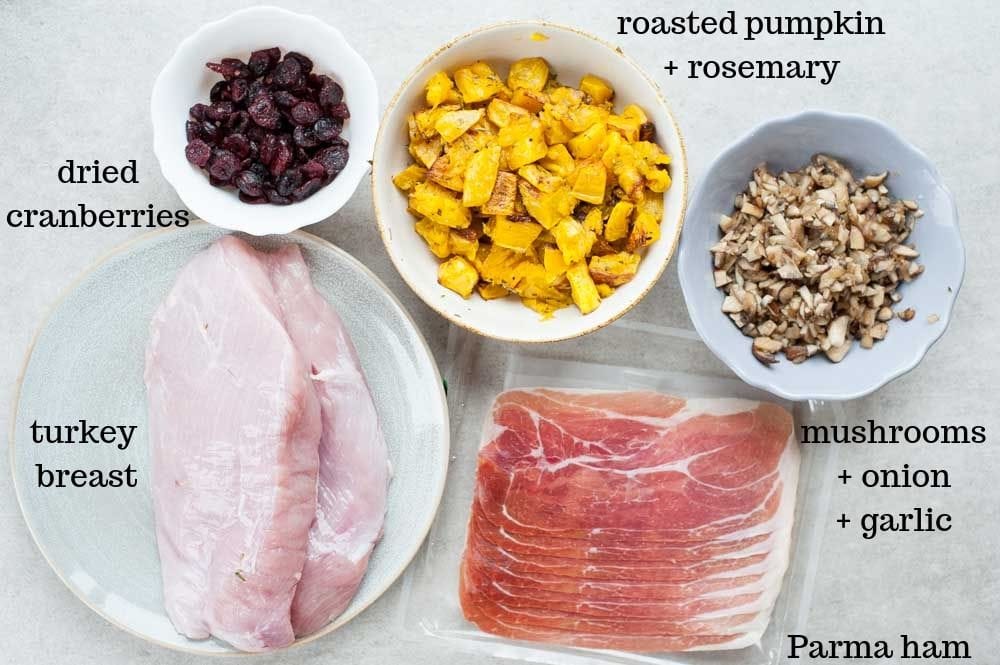
- What turkey part should you choose (turkey breast vs turkey thighs): I don’t recommend using turkey leg meat for this recipe. I’ve tried both types of meat and liked the roulade made with turkey breast much better. Thigh meat includes many small muscles tied together, unlike the breast, which is just one large muscle (not including the tenderloin). Turkey thigh meat is more difficult to pound, less tender (I personally like to stew this meat, check out this turkey stew recipe!) and it’s more difficult to give the roll a nice shape when using it. Nevertheless, if this is what you have, you can use it. You’ll need boneless and skinless meat.
- Butternut squash: sweet and earthy. Alternatively, you can use pumpkin or another squash type. I prefer this recipe with butternut squash because it’s sweeter. Hokkaido pumpkin doesn’t need to be peeled, other squash types do. I recommend roasting more squash than the recipe requires and reserve it to make many other dishes. It also freezes very well. Sweet potatoes are a good alternative.
- Mushrooms: I find the cremini mushrooms the best for this recipe, but you can also button mushrooms or porcini mushrooms (when in season).
- Dried cranberries – can not be substituted for fresh cranberries.
- Parma ham – the roulade needs to be baked for a whole hour in the oven. I’ve found that wrapping it in ham prevents the meat from drying out. The meat is much more juicy and flavorful. If you are a bacon fan you could wrap the roulade in bacon instead of Parma ham (but I personally think it would be too fatty, it’s a matter of taste!). Instead of ham/bacon, you could also use turkey skin if you’ve bought skin-on turkey breast.
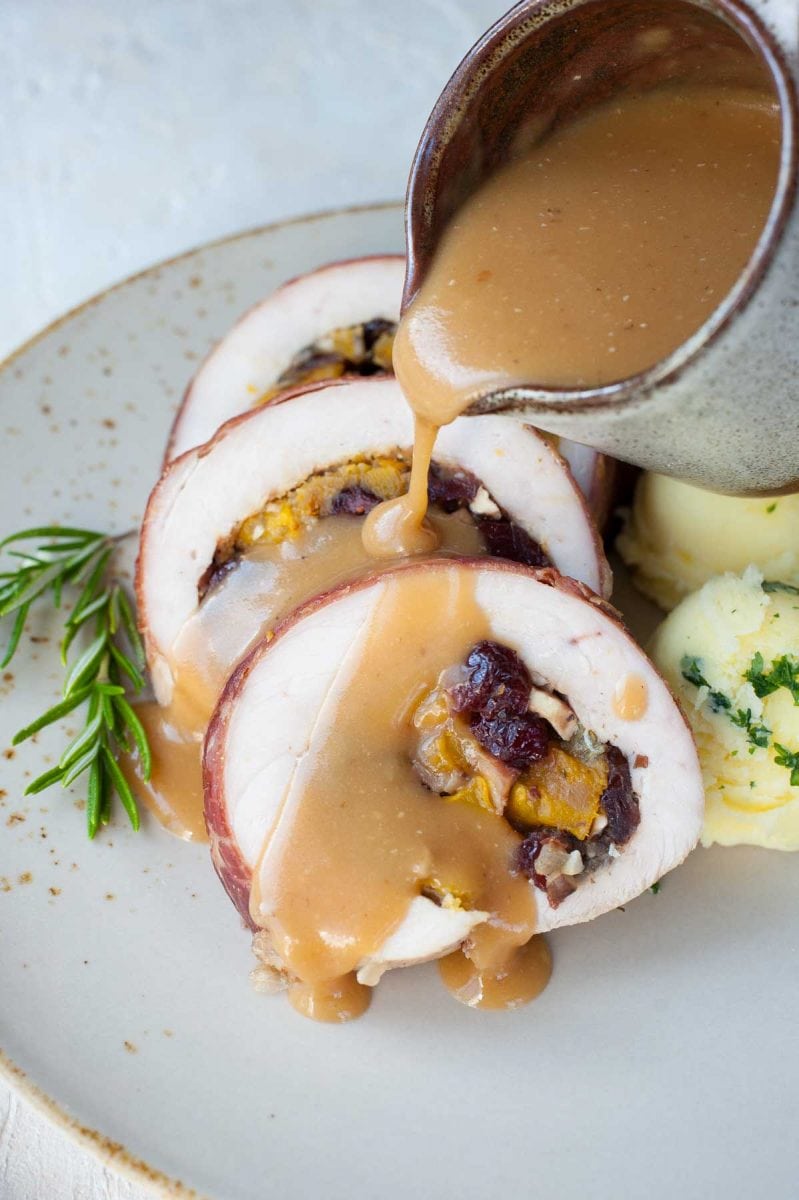
How to use up leftover roasted squash
If you’ve roasted more squash that is needed for this recipe, here are some recipes for using it up:
- White lasagne with pumpkin, mushrooms, and delicious mushroom béchamel sauce.
- Chicken breast with creamy butternut squash and mushroom sauce.
- Pumpkin, ginger, and brown butter soup with caramelized chestnuts.
- Pumpkin ginger soup.
Step by step instructions
STEP 1: Make the stuffing: roast the butternut squash, seasoned with salt, pepper, and chopped rosemary, then sautee mushrooms with onion and garlic.
STEP 2: Prepare the turkey breast: Butterfly turkey breast and pound it with a meat mallet.
STEP 3: Stuff the roulade: Season the meat with salt and pepper and place the stuffing over the meat (roasted squash, mushrooms sauteed with onion and garlic, and dried cranberries).
STEP 4: Roll up the meat and wrap in Parma ham. Tie the roulade with a butcher’s twine. Leave the roulade in the fridge overnight.
STEP 5: Bake the roulade the next day for about an hour.
STEP 6: Make the gravy: Pour the broth into the baking dish. Whisk thoroughly, scraping off all the brown bits on the bottom of the dish until combined.
In a small pot, melt the butter, then add the sifted flour and whisk until combined and bubbling. Add in the pan drippings mixed with the broth.
Cook, stirring for a couple of minutes until the sauce thickens. Strain the sauce through a strainer to make it perfectly smooth.
Season to taste with salt, pepper, and Worcestershire sauce.
Would you like to save this?
How do I know when turkey roulade is ready?
The best method to check if your turkey roll is ready is to measure its internal temperature with a meat thermometer. It’s very cheap and I can assure you, you will use it many more times (eg it can be useful to check the doneness of a duck breast). Insert the thermometer into the thickest part of the meat. The turkey roll is ready when the internal temperature is about 150°F (66°C). Then you need to cover the meat with aluminum foil and let it rest for about 10-15 minutes. After this time the internal temperature of the roulade should be at 165°F (74°C), which is a safe temperature to eat poultry (as per FDA advice) (link opens in a new window).
Why the baking time may vary? Each oven cooks differently, also the thickness of your roulade may be different than mine (it all depends on how you cut the meat and what the shape and size of the roulade are). Therefore, it is best to measure the temperature to make sure that you don’t bake the roll for too long (the meat will be dry and tough) or too short (raw turkey? no, thank you). If your roulade is thicker than mine, you need to bake it longer. If it’s browning too much you can cover it loosely with a piece of plastic foil.
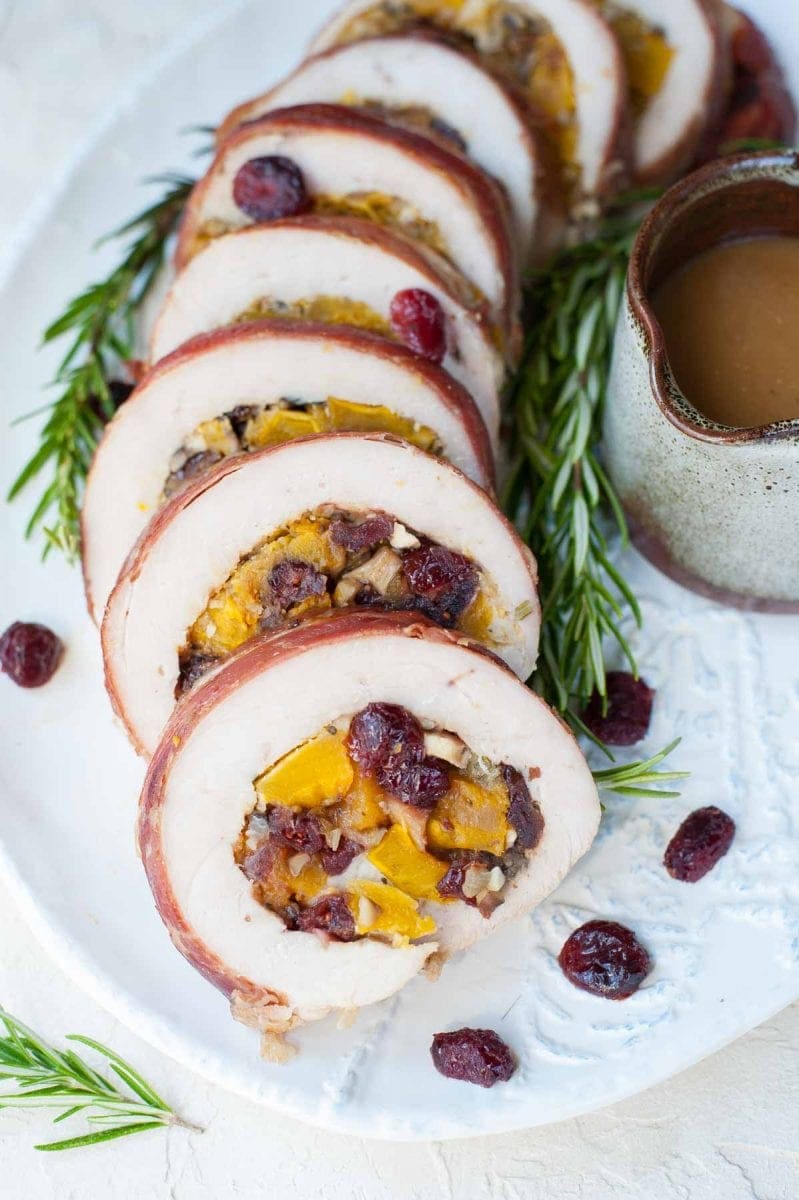
How to butterfly turkey breast
The butterfly technique means cutting the meat partially in half and pounding it with a meat mallet to obtain a larger, thinner piece of meat, that can be rolled up into a roulade. You can order already prepared and rolled-up turkey breast from your butcher. If you’ve bought the already rolled-up turkey breast, wrapped in butcher’s twine, don’t use it on the stuffed roulade. A stuffed roulade is much bigger and the filling can easily fall out of the roulade (yes, I’ve tried this..).
To butterfly the turkey breast place it on a large chopping board, skin-side down (skin should be removed prior to this step). Now butterfly the turkey breast: you need to cut parallel to the chopping board, cut along the length of the breast, but not all the way through, then open the breast like a book. Then pound the meat to an even thickness.
What can I use instead of butcher’s twine to tie the roulade?
If you don’t have the butcher’s twine, you can secure the roulade with toothpicks (at the bottom of the roulade). Then wrap the roulade tightly in plastic foil. Place in the fridge between containers/jars/cartoons, so that it can keep its round shape.
The advantages of butcher’s twine: it holds the round shape of the roulade a lot better, it’s easier to take the string of the baked roulade than to take out toothpicks. I have also heard about using dental floss, but haven’t tried it myself (make sure to use unwaxed and flavorless dental floss though).
How to store baked turkey roll
Store the roulade in the fridge for up to 3-4 days, in a tightly closed container or wrapped in plastic foil.
How to reheat the roulade
I don’t recommend reheating the roulade in the oven, it can easily dry out and be tough. I’ve found the best way to reheat the turkey roulade without drying it out is to STEAM roulade slices. You can do it even if you don’t have a steamer.
I personally use splash guard to do this (you can see it on the picture in this post for fluffy sweet steamed buns). Place the splash guard over a big pot with boiling water, place roulade slices on the splash guard, cover with a lid or a second pot. Steam for about a minute, only until warm (don’t steam it for too long or the meat will be tough!).
Can I prep the roulade a day before?
Yes, you can and you should. As I’ve written above it results in juicier and more flavorful meat.
Can it be frozen?
Yes, it can be frozen. It’s best is to cut the roulade into slices, place them apart on a tray, and freeze. Transfer to a container when frozen. Defrost in the fridge then reheat.
What to serve it with
- simple mashed potatoes (potatoes + butter + splash of milk)
- green beans almondine (green beans with shallot, garlic, and almond garnish)
- green bean casserole (from scratch!)
- zucchini gratin (scalloped zucchini)
- apple celery salad with walnuts and goat cheese
- pumpkin parmesan twice bakes potatoes (link opens in a new window)
- sauteed broccoli rabe and kale (link opens in a new window)
- cinnamon browned butter mashed sweet potatoes (link opens in a new window)
- rutabaga mash (link opens in a new window)
Did you make this recipe? RATE THE RECIPE or tell me in the COMMENTS how you liked it! You can also add a photo of your dish. It would make me very happy and will help other readers. Thank you!!
Turkey roulade with butternut squash, mushroom and cranberry stuffing
Ingredients
for the roulade:
- 2.2 lbs turkey breast 1 kg, skinless and boneless
- 14 oz roasted butternut squash 400g, this is about 2.2 lbs/1kg raw butternut squash
- 2 tablespoons olive oil
- 2 teaspoons chopped fresh rosemary
- 7 oz cremini mushrooms or button/porcini mushrooms, 200g
- 1 small onion
- 2 cloves garlic
- 1 tablespoon frying oil
- 1/2 cup dried cranberries 2.5oz/70g
- 8 slices Parma ham prosciutto crudo
- salt and pepper to taste
for the gravy:
- 2 tablespoons butter
- 2 tablespoons flour
- 1 cup chicken broth
- pan drippings !
- salt and pepper to taste
- 1 teaspoon Worcestershire sauce or to taste, can be omitted
additionally:
- butcher’s twine or toothpicks + plastic foil
Would you like to save this?
Instructions
Prepare the stuffing:
- BUTTERNUT SQUASH: First, you need to roast the squash. Cut the squash into 3/4-inch/1.5-2 cm cubes, mix with olive oil, chopped rosemary, season to taste with salt and pepper, spread evenly on a baking tray. Bake for about 15 minutes at 425°F/220°C/Gas Mark7, no fan (if you have a convection oven, reduce the temperature by about 20 degreeor until the squash is soft (a fork inserted into squash comes out easily). When the squash is ready, measure out the needed amount and mash it slightly with a fork (only slightly, do not mash it into a puree).
- MUSHROOMS: Cut mushrooms into slices, dice the onion, finely chop the garlic. Heat a tablespoon of oil in a large frying pan over high heat, then add the mushrooms. Cook for 2 minutes without stirring (or until the mushrooms are browned at the bottom), then reduce the heat to medium and add the onions. Cook, stirring, for about 4 minutes, until the mushrooms are soft, then add the garlic and cook for another minute. Transfer the content of the pan to a chopping board and roughly chop the mushrooms (it does not have to be very fine).
Prepare the turkey breast:
- We need to obtain a thin, rectangular piece of meat from the turkey breast. If you’ve purchased whole turkey breast, you need to remove the bone, the skin and the tenderloin (leave the tenderloin if it’s small and well attached to the rest of the breast). It’s best to buy a piece of turkey breast that is more square-shaped than triangular (only if you can choose, both types will work). Place the turkey breast on a large chopping board, skin-side down (but skin needs to be removed prior to this step). Now butterfly the turkey breast: you need to cut parallel to the chopping board, cut along the length of the breast, but not all the way through, then open the breast like a book. At this point, you can repeat that on the left and right side of the meat if it’s too thick to pound. I found out that rather flat and smaller turkey breasts allow that you butterfly them only once, but bigger pieces of meat require double butterflying (you can also butterfly the meat only once and just pound it a little more). When you’re ready with cutting the meat, place a thick plastic foil or baking paper over the meat (to avoid tearing the meaand pound it with a meat mallet to an even thickness of 1/2-3/4-inch / 1,5 cm. The meat should be more rectangular than square, but it should not be a long rectangle. All shapes will work but bear in mind that a square-shaped piece of meat will make thicker (talleroulade which needs to be baked longer.
Stuff the roulade:
- Season the meat generously with salt and pepper on both sides.
- Spread the filling (roasted squash, then the mushrooms and cranberrieover the prepared meat, leaving about 1-inch/2 cm border (the stuffing won’t fall out of the roll when it’s being rolled up). Spread the filling on this side of the meat that was being pounded.
- Roll up the roulade along the long side, wrap in Parma ham slices and tie it with a piece of butcher’s twine.
- Put the roulade in the fridge overnight – the meat will be more tender and flavorful, but it will also keep its round shape better.
Bake the roulade:
- Remove the turkey roll from the fridge 1 hour before you plan on baking it.
- Preheat the oven to 375°F/190°C/Gas Mark 5, no fan (if you have a convection oven, reduce the temperature by about 20 degrees).
- Place the roulade on a large / medium rimmed baking tray and bake for about 1 hour, or until the internal temperature is about 150°F/66°. Please bear in mind that each oven bakes differently, and baking time may also vary depending on the thickness of the roulade.
- Take the roulade out off the oven, transfer to a large chopping board, cover with aluminum foil and leave for 10-15 minutes (during this time the internal temperature of the roulade should be at 165°F/74°C, which is a safe temperature to eat poultry).
- Meanwhile, make the gravy.
Gravy:
- Pour the broth into the baking dish. Whisk thoroughly, scraping off all the brown bits on the bottom of the dish until combined.
- In a small pot, melt the butter, then add the sifted flour and whisk until combined and bubbling. Add in the pan drippings mixed with the broth. Cook, stirring for a couple of minutes until the sauce thickens. Strain the sauce through a strainer to make it perfectly smooth. Season to taste with salt, pepper and Worcestershire sauce.
Serve:
- Cut the roulade into slices. Serve with the gravy and mashed potatoes.
- Enjoy!

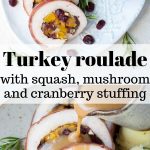
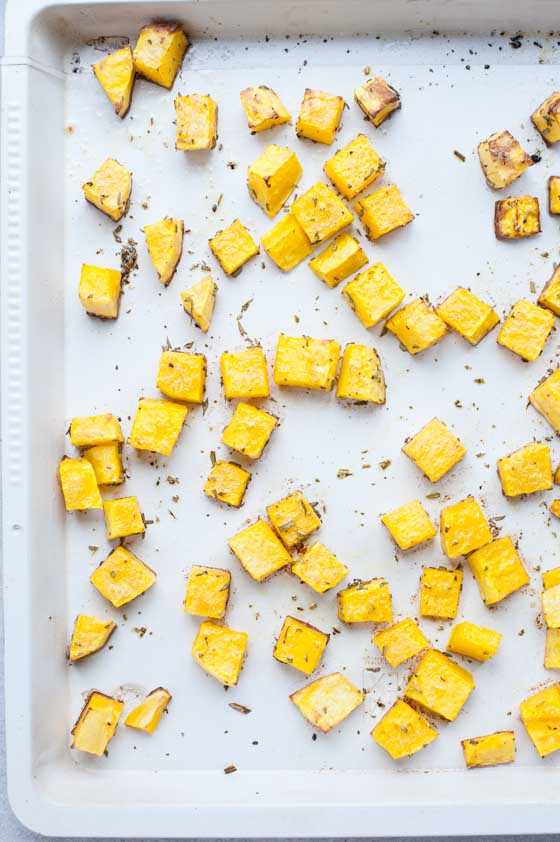
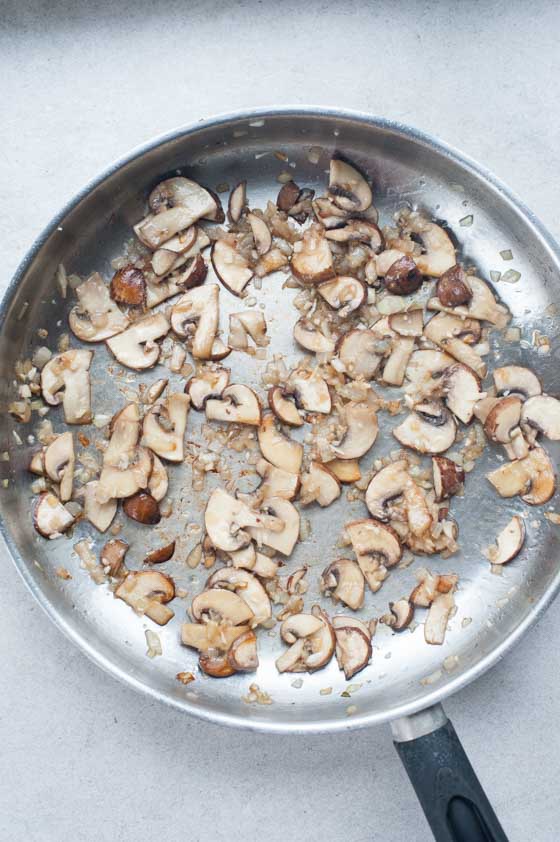
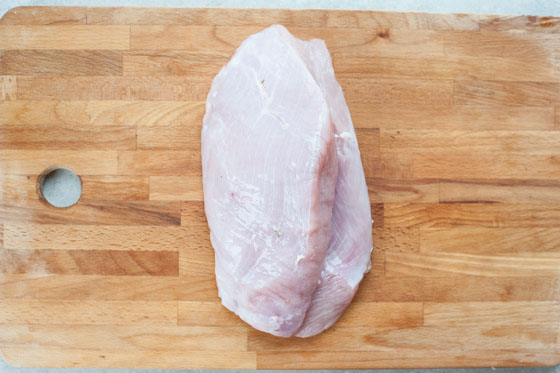
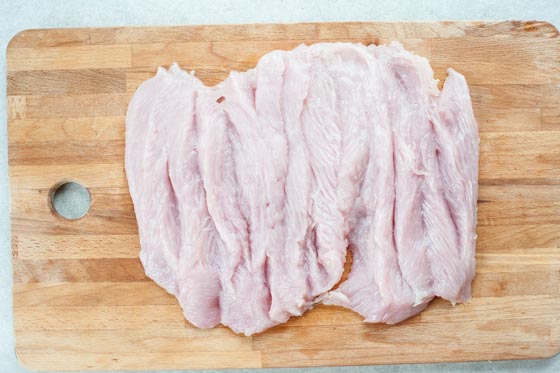
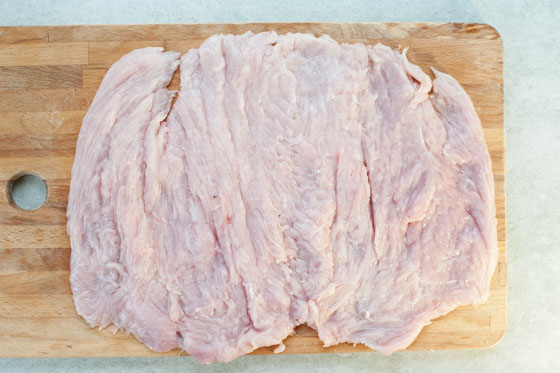
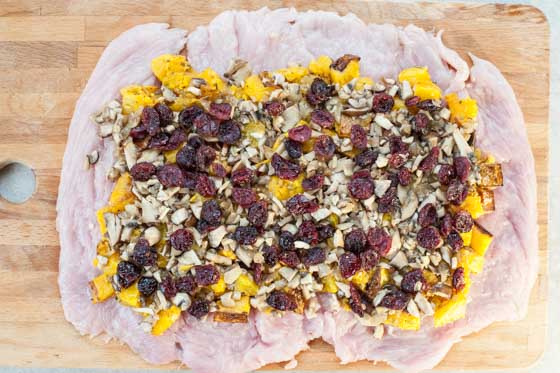
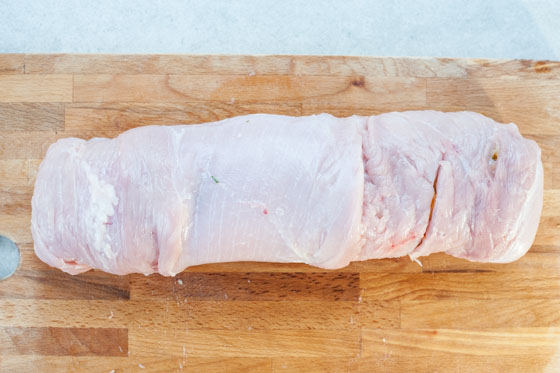
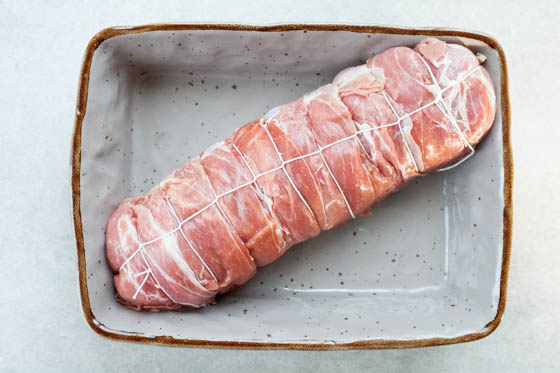
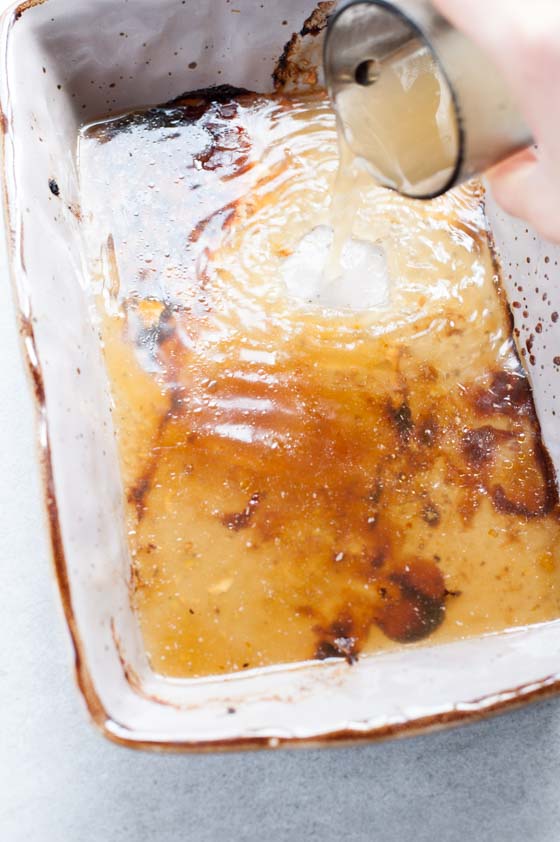
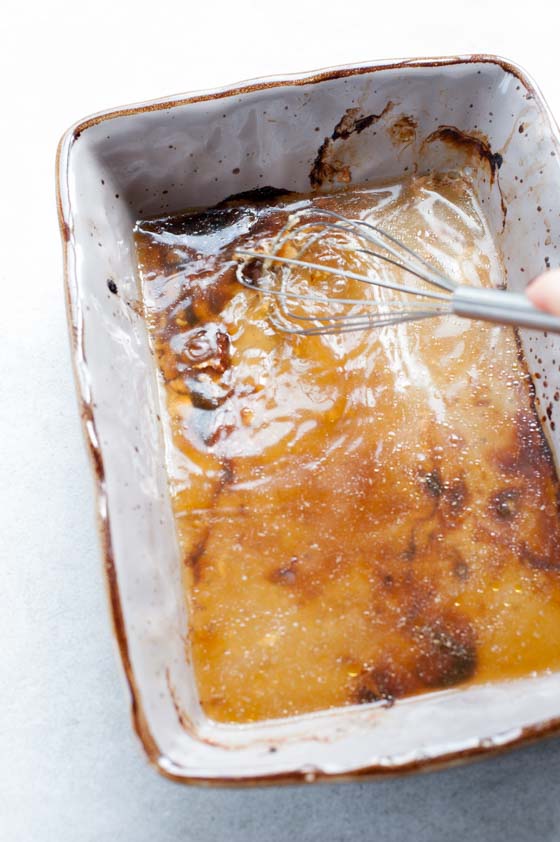
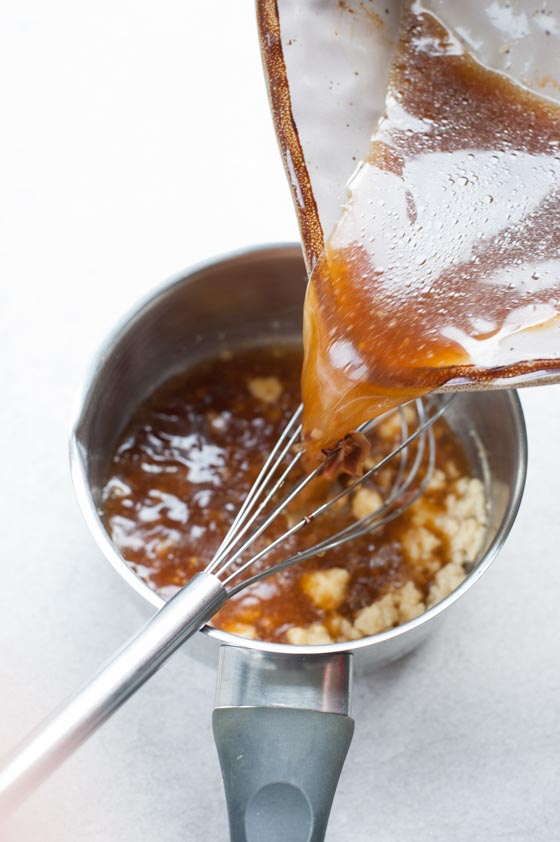
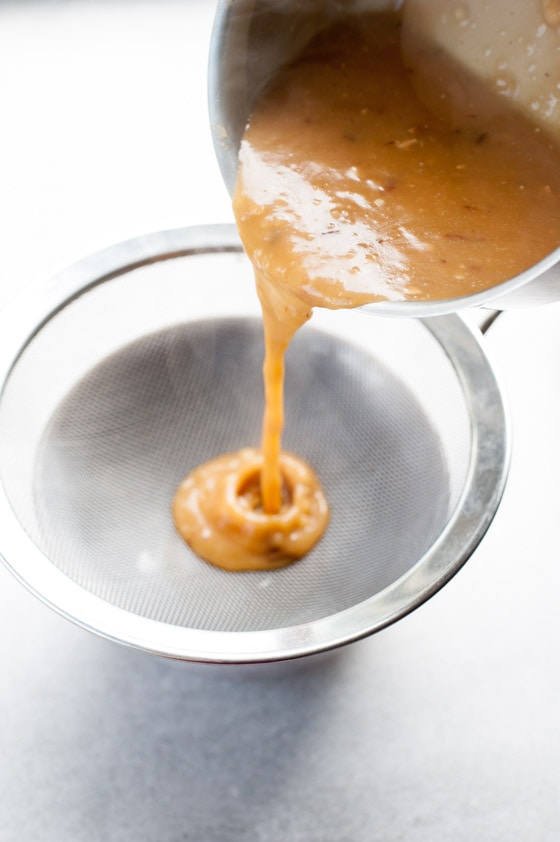
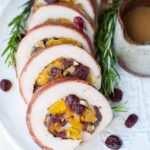
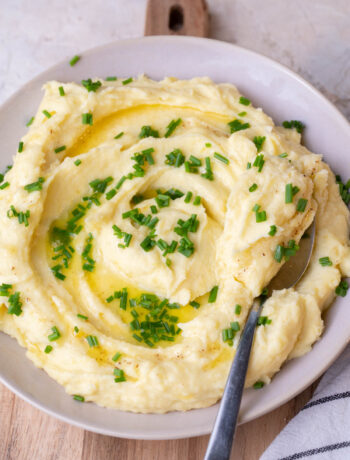
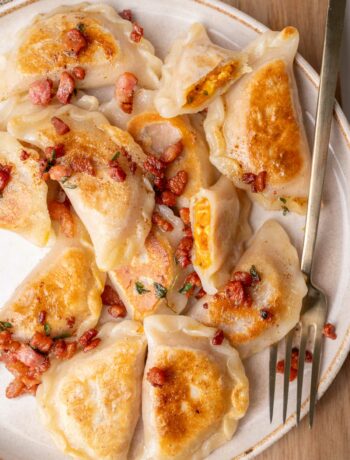
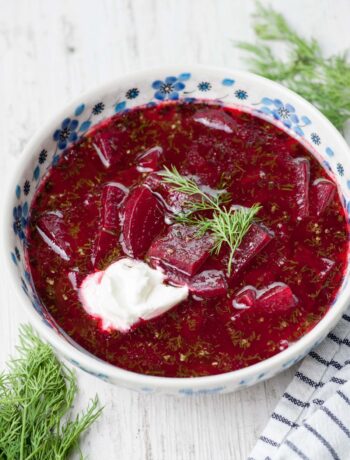
2 Comments
Donna
28 November 2020 at 16:55I’ve made this for Thanksgiving because I didn’t want to bake a whole turkey. It was delicious, everyone loved it. Thank you for the recipe!
Aleksandra
28 November 2020 at 16:56I’m so happy it worked out for you. Thank you for letting me know!